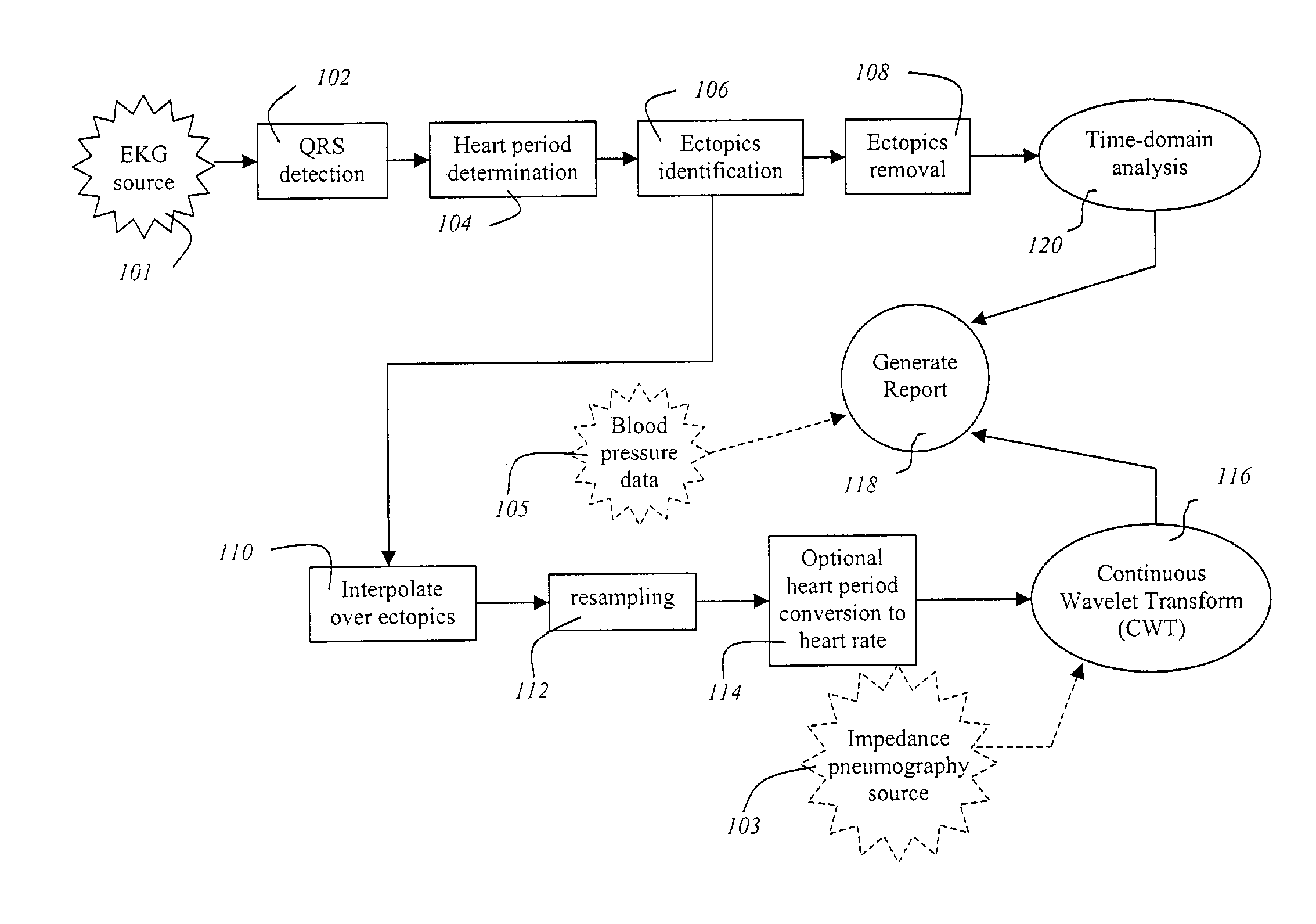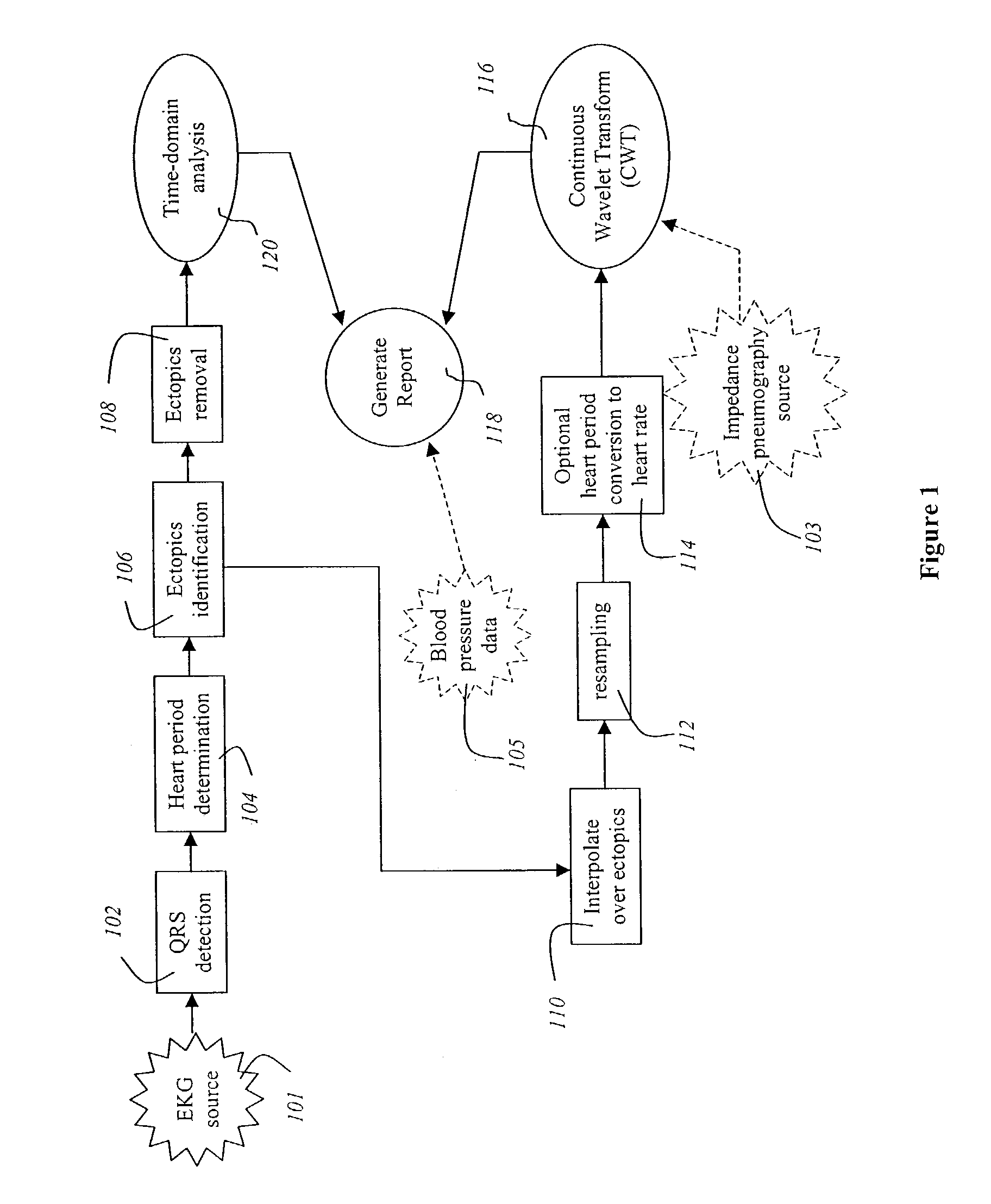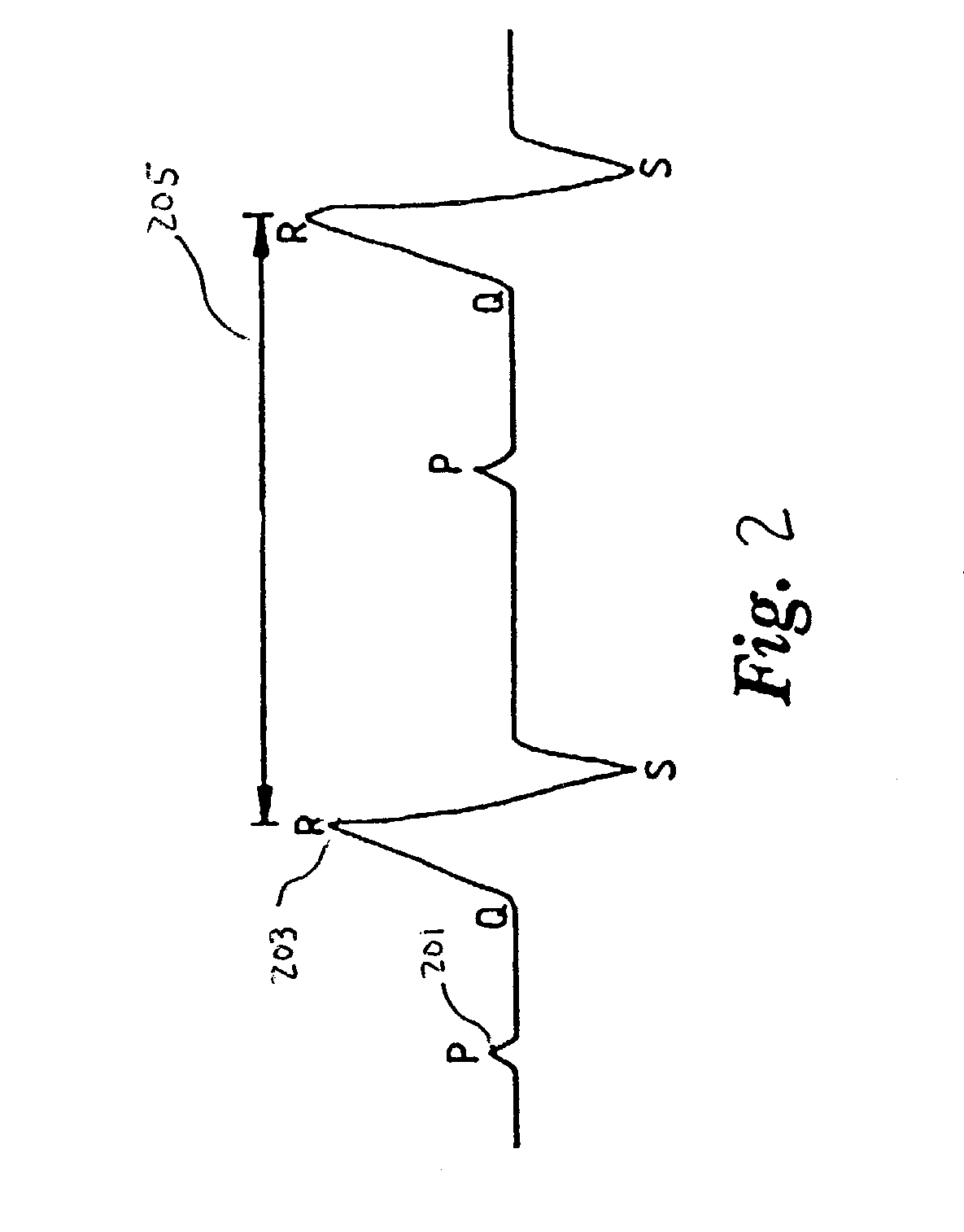Method and apparatus for monitoring the autonomic nervous system using non-stationary spectral analysis of heart rate and respiratory activity
- Summary
- Abstract
- Description
- Claims
- Application Information
AI Technical Summary
Benefits of technology
Problems solved by technology
Method used
Image
Examples
Embodiment Construction
[0019]A preferred embodiment of the present invention provides a method and apparatus for autonomic nervous system monitoring. Inputs from three sources are obtained and processed using continuous wavelet transforms and standard time-domain analysis. The results of the processing are displayed at an output (e.g., a video monitor).
[0020]FIG. 1 is a graphical illustration of the system in accordance with a preferred embodiment of the present invention. In a preferred embodiment, input is gathered from three sources. The three input sources are the EKG source 101, the impedance pneumography source 103, and the blood pressure source 105. Methods to gather the data at each source are well known in the art, and thus are not discussed herein in detail. The EKG source, which measures electrical impulses from the heart, is sampled at a minimum sampling rate of 250 samples per second, and a more preferred rate of 1000 samples per second, so that the heart beat intervals can be measured precis...
PUM
 Login to View More
Login to View More Abstract
Description
Claims
Application Information
 Login to View More
Login to View More - R&D
- Intellectual Property
- Life Sciences
- Materials
- Tech Scout
- Unparalleled Data Quality
- Higher Quality Content
- 60% Fewer Hallucinations
Browse by: Latest US Patents, China's latest patents, Technical Efficacy Thesaurus, Application Domain, Technology Topic, Popular Technical Reports.
© 2025 PatSnap. All rights reserved.Legal|Privacy policy|Modern Slavery Act Transparency Statement|Sitemap|About US| Contact US: help@patsnap.com



